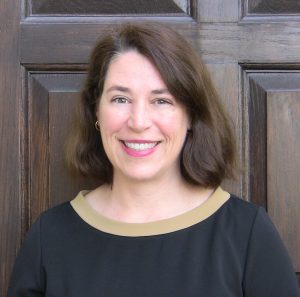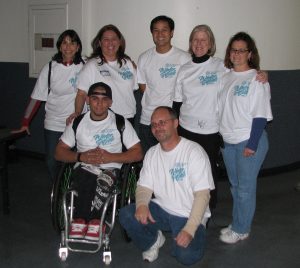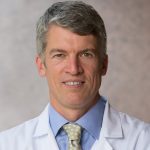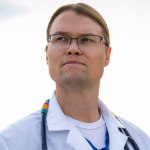“I can never go back”: transitions in life and health care
Researchers at the University of San Diego wanted to design a way for kids with spina bifida to move more easily into the adult health care system — so they turned to patients and parents for help. Ruth Bush will describe the team’s work and join a panel presentation at Medicine X | Ed on April 23 starting at 11:20 a.m. Follow @StanfordMedX throughout the weekend for highlights, or watch live here.
Andrea Villegas Jorquera was born on Feb. 10, 1996, a tiny thing weighing little more than 5 pounds, with black hair and dark brown eyes. She had a happy disposition and, almost from birth, a close connection to animals — especially dogs.
She also had spina bifida, a congenital birth defect that rendered her paralyzed from the knees down and unable to fully control bladder and bowel movements.
As she moved through school and into her teenage years, Andrea required extra support in the classroom, to work through a learning disorder, and she faced bullying from her peers. She also confronted a headache shared by so many other kids with chronic conditions: transitioning out of the pediatric health care system and into the adult one. This meant leaving behind long-standing relationships, and a clinic she knew well, to assemble a new roster of specialists, who in some cases seemed to know less about her condition than she did.
“He doesn’t know anything about spina bifida!” Andrea’s mom, Erika, remembers her daughter exclaiming after her first appointment with a new primary care physician. “Is he going to be able to help me?”
When physicians listen
As it happened, Andrea’s longtime urologist at Rady Children’s Hospital, George Chiang, MD, was interested in just these challenges. What had begun as a simpler question — Why do so many spina bifida patients struggle with obesity? — had turned into a more complicated one, through getting to know his patients: How could the health care system better facilitate the transition into adulthood for Andrea and her peers?
With the support of a PCORI “pathway to proposal” grant, Chiang and his colleague Ruth Bush, PhD, MPH, were able to take up the issue. Rather than dive into a full-fledged research project based on their own questions and assumptions, they spent half a year largely listening to a community of patients and caregivers who held monthly meetings at a nonprofit advocacy organization, Spina Bifida of San Diego. The group included Andrea, then 18, and was convened by her mom, a longtime board member.
Some of what the researchers heard was familiar, but much of it surprised them. For instance, the obesity problem: What Chiang and Bush has assumed was largely a mobility issue turned out to be more of a social and psychological one. The kids were sick of having special requirements. They would go to the gym, but they wanted to get there without their parents in tow. They didn’t love looking and feeling different.
“So we were going about this all wrong,” Bush says. “We thought the barrier was the wheelchair. Okay, yes, that is a barrier. But it’s not the one the patients mind. It’s transportation; it’s independence.” (A write-up on the team’s findings related to obesity is here.)
Other insights: The teens were interested in having a dedicated person to coordinate their care, face-to-face. They also wanted to be able to talk directly with doctors in their native language: texting. And the parents carried an emotional toll as caregivers that deserved its own attention.
The revelations were crucial, Bush says; without them, anything the team designed “was going to be moderately successful at best.”
But the process brought challenges, too. It was hard enough just getting the volunteers — who were largely under-resourced and had limited access to to transportation, who were dealing with a chronic condition, who had families and fulltime jobs, who sometimes got sick — to show up to a Saturday morning meeting.
And when they did, it took time to draw them out. The researchers and the patients and caregivers were sometimes both figuratively and literally speaking different languages.
But Bush says her work going forward will never be the same; she’s almost embarrassed by her earlier approach.
“Who was I to come in and tell somebody, whose condition I don’t have, whose experiences I don’t have, what’s important to them?”
“I can never go back,” she says.
Next steps
Andrea is more outgoing these days — more likely to open up, less likely to give a simple “yes” or “no” answer. She’s working toward a degree in social work at Southwestern College. She volunteers at church, helping with the catechism.
Meanwhile, Chiang and Bush are putting together a grant proposal for a 3-year research project shaped largely by the focus groups. They hope to identify solutions that will make the transition from pediatric to adult care easier for patients with spina bifida, so young people like Andrea can focus on navigating more exciting corners of grown-up life, like college campuses and romantic relationships. And they’re starting to tackle one of the big questions raised by their preliminary work: How do you incorporate a patient-centered approach to research in medical education?
“We have this unanimous jury saying, ‘This is good,’” Bush says. “But now that we know that it’s good, we also have to recognize that it’s not easy. How do we make it easier? How do we make it a natural part of curriculum? That’s going to take work.”
For the parents who participated in the research, the next step is at once simpler and infinitely more complicated.
“We protect our kids too much,” Andrea’s mom, Erika, says. “We need to let them go.”
Patient engagement: lessons learned by researchers
- Work with a patient advocacy organization
- Join an existing meet-up to limit demands on time and transportation
- Provide snacks and other incentives to encourage attendance
- Identify a “fired up” patient or parent to serve as community liaison
- Include team members who are bilingual and bicultural, as well as someone with a public health background
- Recognize that student team members will have limited availability
- Know that the “storming” stage of the “form, storm, norm” team-building process will be significant
- Know that real patient engagement takes time. “We didn’t have people open up the first, second or third time we met with them,” Bush says.
- Leverage trust. In this case, George Chiang had longstanding relationships with many of the patient and parent volunteers.









Great article. I was born with Spina Bifida. It is great to
see MedX and researchers helping and learning from these kids.
This is a heartbreaking example of the added burden doctors hand patients’ families when they do not assume an active, supportive role as a child-patient transitions to adult physicians. Who knows how to negotiate the medical system better than those working inside it? Every patient should be confident their pediatric team will guide them to knowledgeable professionals trained in their chronic condition who will care for their condition, as well as for them holistically,, as human beings who may encounter unexpected complex challenges, and/or emotional stress.